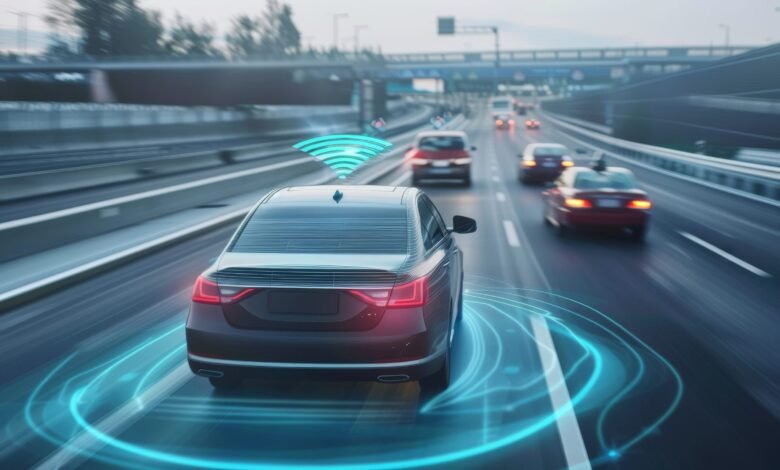The Rise of Autonomous Vehicles: Transforming the Future of Transportation

In recent years, the transportation industry has witnessed a seismic shift, with autonomous vehicles (AVs) leading the charge towards a new era of mobility. These self-driving cars, trucks, and buses, powered by artificial intelligence (AI), machine learning, and sophisticated sensors, have the potential to revolutionize the way we think about travel, safety, and urban infrastructure. As we move closer to a world where autonomous vehicles are a regular part of our daily lives, it’s important to explore the implications of this technological revolution and its impact on society, the economy, and the environment.
What Are Autonomous Vehicles?
Autonomous vehicles are equipped with a combination of sensors, cameras, radar, and LIDAR (Light Detection and Ranging) systems that allow them to navigate roads, interpret their surroundings, and make driving decisions without human intervention. These vehicles operate on complex algorithms and deep learning models that help them understand traffic patterns, road signs, pedestrian movements, and other critical elements of the driving environment. The level of autonomy in these vehicles is categorized into five levels:
- Level 0: No automation (driver does all the work).
- Level 1: Driver assistance (e.g., cruise control).
- Level 2: Partial automation (e.g., Tesla’s Autopilot, where the vehicle can control steering and speed but the driver must remain engaged).
- Level 3: Conditional automation (vehicle can handle most driving tasks, but the driver must be ready to intervene).
- Level 4: High automation (vehicle can operate independently in certain conditions without human intervention).
- Level 5: Full automation (no human involvement required, the vehicle can drive in any environment or situation).
At present, many companies are working on vehicles at levels 2 and 3, while the dream of fully autonomous vehicles (Level 5) remains on the horizon.
The Technological Drivers Behind Autonomous Vehicles
Several advancements have made the rise of autonomous vehicles possible:
- Artificial Intelligence (AI) and Machine Learning: AI enables autonomous vehicles to make real-time decisions by processing data collected from their sensors. Machine learning allows these vehicles to improve their decision-making over time by analyzing patterns and outcomes from previous driving experiences.
- Sensors and Cameras: Autonomous vehicles rely on a variety of sensors, including radar, LIDAR, and cameras, to detect their surroundings. These sensors help the vehicle identify objects, detect obstacles, and navigate safely. LIDAR, for instance, creates a 3D map of the environment, allowing the vehicle to recognize objects with high precision.
- Connectivity and Data Exchange: Autonomous vehicles rely on Vehicle-to-Everything (V2X) communication, a technology that enables cars to communicate with other vehicles, traffic infrastructure, and cloud-based systems to share data in real time. This connectivity enhances safety, coordination, and efficiency.
- Mapping and Localization: High-definition mapping is critical for autonomous vehicles to understand their position and navigate accurately. These maps are continuously updated to reflect road changes, construction zones, or new traffic patterns.
The Impact on Society
The rise of autonomous vehicles is poised to have profound social, economic, and environmental effects:
1. Safety and Accident Reduction
One of the most compelling promises of autonomous vehicles is their potential to reduce accidents caused by human error. The majority of traffic accidents are attributed to factors like distracted driving, fatigue, and impaired driving. Autonomous vehicles, however, are designed to be consistently alert and avoid making decisions that could lead to accidents. According to the National Highway Traffic Safety Administration (NHTSA), human error is responsible for over 90% of traffic crashes, suggesting that AVs could dramatically reduce road fatalities and injuries.
2. Transportation Accessibility
For people with disabilities, the elderly, and those who are unable to drive due to medical reasons, autonomous vehicles represent a life-changing advancement. Self-driving cars could provide them with greater mobility and independence, allowing them to travel more easily and access services that were once out of reach.
3. Traffic Efficiency and Reduction
Autonomous vehicles could lead to smoother traffic flows by reducing congestion, as they can communicate with each other to optimize traffic patterns. Through coordinated driving, AVs can reduce bottlenecks and improve fuel efficiency. Furthermore, autonomous vehicles may allow for smaller, more efficient road networks, as cars could safely travel at higher speeds or closer together, optimizing road space usage.
4. Job Displacement and Creation
While autonomous vehicles have the potential to reduce labor costs in industries like trucking, delivery, and taxis, they also raise concerns about job displacement. Truck drivers, for instance, make up a large portion of the workforce in many countries. However, the rise of autonomous vehicles may also create new jobs, such as vehicle maintenance, data analysis, cybersecurity, and new roles in urban planning and infrastructure development.
Economic Implications
The economic landscape will shift as AV technology evolves. While industries associated with traditional car ownership—such as auto insurance, repair, and driving services—may face disruptions, new markets will emerge. The demand for connected infrastructure, fleet management, and AV-specific insurance products will increase. Moreover, autonomous vehicles have the potential to unlock efficiencies in supply chains by improving delivery speed and reducing operational costs.
Environmental Benefits
Autonomous vehicles have the potential to help reduce the environmental impact of transportation. They could optimize routes to minimize fuel consumption, reduce emissions through more efficient driving, and support the integration of electric vehicles (EVs). In addition, AVs could lead to a shift away from personal car ownership, encouraging shared mobility solutions such as ride-hailing, which could result in fewer cars on the road, further reducing traffic congestion and environmental impact.
Challenges and Ethical Considerations
While the promise of autonomous vehicles is immense, there are significant challenges to overcome:
- Regulatory and Legal Framework: Governments and regulatory bodies will need to create new laws and guidelines to ensure the safe deployment of autonomous vehicles. This includes determining liability in the event of accidents, setting safety standards, and addressing concerns related to cybersecurity.
- Ethical Dilemmas: Autonomous vehicles may face situations where ethical decisions are required, such as determining how to react in an unavoidable crash scenario. Programming these decisions, often referred to as the “trolley problem,” raises complex moral questions that need to be addressed.
- Public Trust and Adoption: Building public trust in autonomous vehicles will be crucial. Many people remain skeptical of self-driving technology due to concerns about safety and reliability. Manufacturers must demonstrate the technology’s effectiveness through rigorous testing and transparent communication.
Conclusion
The rise of autonomous vehicles represents a transformative shift in the way we think about transportation. While there are still hurdles to overcome—technological, ethical, and regulatory—the potential benefits are undeniable. From improved road safety and reduced traffic congestion to enhanced mobility and environmental sustainability, AVs have the power to reshape cities, economies, and the way we live. As we continue to develop and refine this technology, the dream of a fully autonomous world seems closer than ever before. However, it will take collaboration among innovators, regulators, and the public to navigate the path ahead and ensure that the transition to autonomous vehicles is safe, equitable, and sustainable.




